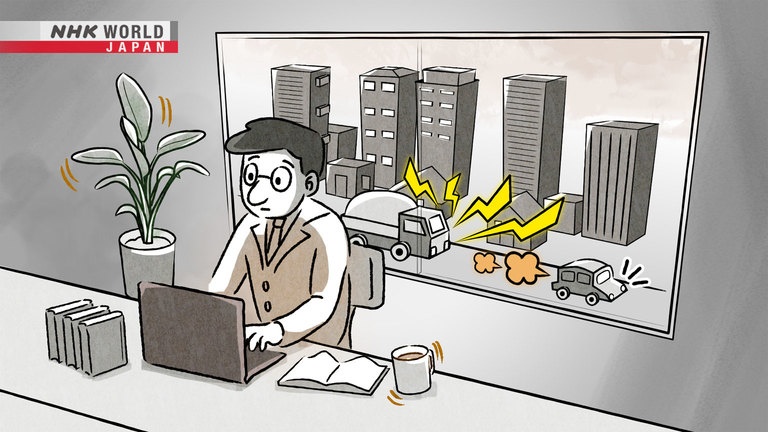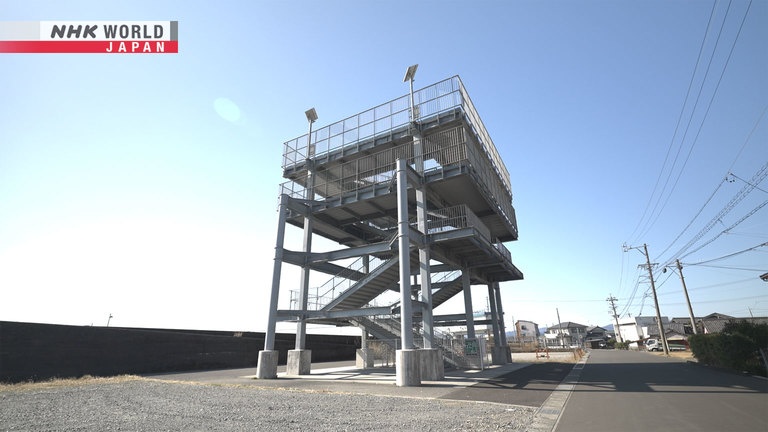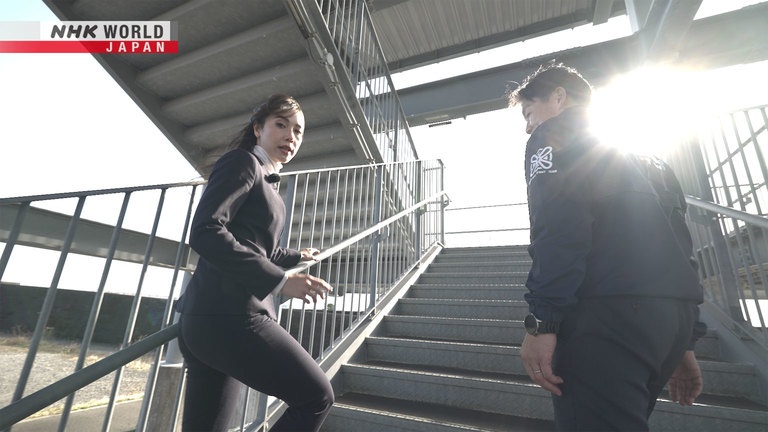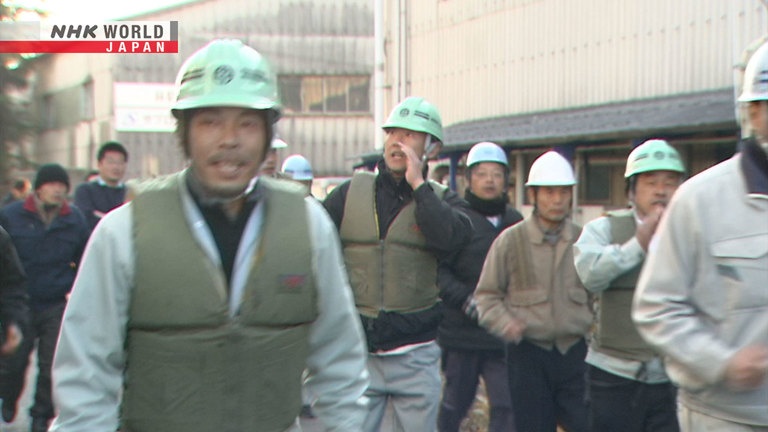#40 Tsunami Evacuation
In this episode, we look at Japan's efforts to improve tsunami evacuation, from overcoming "normalcy bias" that causes people to underestimate risk, to the installation of coastal evacuation towers.




Transcript
Japan has a long history of natural disaster.
Now, the power of science is helping to overcome them.
BOSAI: Science that Can Save Your Life.
January 1st, 2024.
Japan had a shocking start to the year.
A huge earthquake struck the Noto Peninsula, which faces the Sea of Japan.
Many buildings collapsed.
More than 240 people were killed.
What's going on?
The sea has really gone out.
This earthquake also caused a tsunami.
It didn't take long to reach the coast, just one minute after the earthquake occurred.
The tsunami surged around 400 meters inland.
In Japan, tsunamis have caused many casualties in the past.
A variety of research has been carried out into how to evacuate quickly and safely.
Even one second faster.
Or one meter higher.
Today, we'll examine Japan's latest initiatives in tsunami evacuation.
This is the emergency news report about the earthquake that was broadcast on January 1st.
It reports that a major tsunami warning has been issued,
along with the magnitude of the quake and the location of the epicenter.
The way the message was delivered surprised many people.
Evacuate to a high place immediately!
If there is no high ground nearby,
evacuate to the top of a tall building
or far away from the coast!
Do not stop or turn back!
The strong commanding tone, telling people to "evacuate immediately,"
was completely different than usual.
Many people posted on social media saying they were "surprised."
"The announcer is really yelling."
"It's too frightening."
"Emotional, not calm."
However, this commanding evacuation call had been carefully prepared and was broadcast as planned.
We spoke to announcer INOUE Jiro,
who has been responsible for NHK's disaster reporting for many years.
This was the first time that such a strong call
was made by the announcer,
and we received a wide variety of reactions.
However, some people said they wouldn't
have got moving if it wasn't for that call.
It's difficult to command people, but there's often
a "normalcy bias" which we have to overcome.
"Normalcy bias" is the tendency to underestimate risk
and think that you will be fine even though danger is approaching.
In 2003, a subway fire in South Korea made headlines when 192 people died.
Many passengers remained inside the train even when it was filling with smoke.
In Japan too, this mentality is closely related to the delay in escaping from tsunamis and floods.
We tell people not to go
and check on the rice fields.
But some still go.
The rice fields may be their livelihoods,
but we have to tell them that
their lives are more important.
It's difficult to find the right words.
This is why the Call to Save Lives project was launched.
They have been working with experts
to investigate what kind of evacuation call leads to action.
The tone and delivery of the evacuation message
can make people react in different ways.
Previously, the NHK announcer used a polite tone:
"Please flee to save your lives."
By using a strong commanding tone:
"Run away!"
we hope to get people moving.
We chose this tone because
we want people to understand
that something out of
the ordinary is occurring.
The call was made in a commanding tone that was deliberately different from usual.
This was to break the normalcy bias.
People find it difficult to take action
unless they're emotionally moved.
We want people to think,
"The river is going to flood,"
or "If I run to the school,
I'll be safe."
We want to find words that
touch the individual person.
They will continue to research disaster psychology to find more effective ways to make evacuation calls.
Research is currently underway into people's psychological state when faced with a major disaster, such as a tsunami.
This includes the evacuation call.
Dr. Naoya SEKIYA of the University of Tokyo is one of the experts who supported the project.
He conducts research on people's psychological state during disasters.
Even when a major disaster such as a tsunami is approaching,
it is psychologically difficult to fully comprehend the danger.
We usually live our daily lives calmly.
It's not easy to realize
when an event is occurring
that could cause you to be
seriously injured or even die.
It's something most people
have never experienced before.
Normalcy bias allows us to protect our peace of mind by not reacting immediately
to the various psychological stresses of daily life.
However, in emergencies that require you to react immediately,
there is a risk of not evacuating quickly enough.
What is important therefore is having a trigger to help you recognize a crisis as a crisis.
The key is whether or not
you can break out
of your normal
psychological state,
using a trigger such as
the shaking of an earthquake,
someone telling you to evacuate,
or the emergency radio system.
An earthquake is coming.
Evacuate! Let's evacuate now!
Sekiya emphasizes the importance of determining "evacuation leaders" within a community in advance.
It becomes easier for that person to break their normalcy bias
because they have a role to play.
It also becomes easier for the people around them,
when the evacuation leader tells them to evacuate in a loud voice.
Suppose you're on a train and
someone is brandishing a knife.
If people evacuate in one direction,
others will follow and escape together.
It's important to take the lead in evacuating.
This will help people around you
understand the situation,
and evacuate safely.
Research has also shown that actually going all the way to the evacuation site
during an evacuation drill lowers psychological hurdles.
Various attempts are being made in Japan to break the normalcy bias.
I am currently in Yaizu City, Shizuoka Prefecture, which looks out over the Pacific Ocean.
The sea may seem calm now, but if a tsunami occurs, it becomes a major threat.
In order to escape from such a tsunami, tsunami evacuation towers are being built all over Japan.
After walking for about one minute from the coast...
I saw the tsunami evacuation tower.
It's a 12-meter-tall structure made with a sturdy steel frame.
If an earthquake occurs when you're near the coast,
you may not have enough time to escape to higher ground.
The tower was built for this kind of emergency evacuation.
Since the Great East Japan Earthquake, evacuation towers have been constructed all over Japan.
In ten years, the number has increased eleven-fold.
In 2021, there were over 500.
- Hello.
- Hello.
This is KONAGAYA Masahiko from the Disaster Preparedness Planning Division of Yaizu City.
Shall we go up?
The handrails are thick,
so it's easier for elderly people
and children to go up.
There's also this feature.
There's anti-slip material on the stairs.
Without this, it'd be slippery if it was raining
or if you were in a hurry.
Safe evacuation is one of our major aims.
This is the first level.
There's also one level higher.
Even the first level is quite high.
Yes, it's approximately
9 m from the ground.
I was able to climb to the top in about one minute.
How many minutes would it take
for a tsunami to arrive?
We predict it would take
at least 5 minutes in this area.
There are no other tall buildings around,
so if an earthquake occurs,
people can run here straight away.
The evacuation tower is designed to hold up to 570 people.
There are some other features to help with evacuation.
For example, LED lighting powered by solar panels,
to make it easy to find and safe to use even at night.
But that's not all...
There are over 5,000 foreigners
living in Yaizu,
so we've put up clear evacuation signs
in various places.
That's great.
Using these tsunami evacuation towers
will help reduce the number of casualties.
Disasters like the Noto Peninsula earthquake remind us
that we should take part in evacuation drills.
In Yaizu we want to be even more careful
about these kind of evacuation measures.
Some tsunami evacuation towers are even designed to be accessible by wheelchair.
Others can also serve as pedestrian bridges.
In order to reduce the number of casualties,
both the theory and practice of tsunami evacuation are advancing day by day.
The ocean provides us with abundant blessings, but if an earthquake occurs,
a tsunami can endanger people's lives.
Japan is an island nation surrounded by the sea,
and so the Japanese people have developed methods to evacuate and protect themselves from tsunamis.